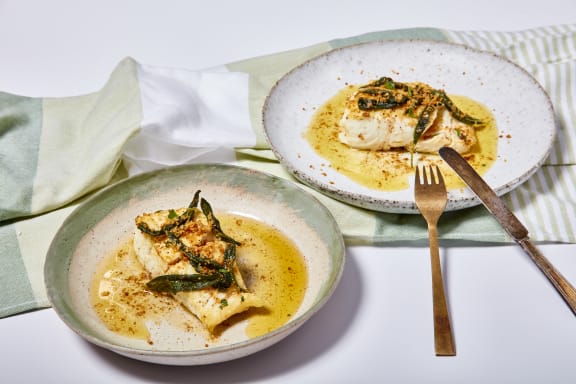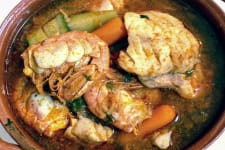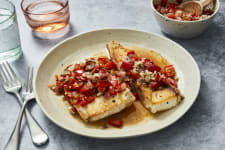Deciding which sustainable catch is the best tasting fish is ultimately a subjective matter. (Case in point: We love all of them!) However, there are several fresh and tasty species from Alaska that will please even the most timid seafood newbies and turn them into seafood lovers.
We know fish, and we know that for first-time seafood eaters, the best tasting fish is going to be a mild fish with a flaky, tender texture. Fortunately for first-timers, wild-caught Alaskan seafood encompasses a variety of fish that doesn’t taste fishy.
Least Fishy Fish from Alaska
Think of wild Alaskan cod as a set of training wheels for prospective fish lovers. It’s mild, flaky, tender, and skinless, amenable to a wide range of easy-to-like preparations. Even simply sautéed in olive oil and lightly seasoned, a fillet of cod won’t have any fishy undertones that limit its appeal.
Instead, its clean taste makes it a blank canvas for your first-timers’ favorite flavor profiles and fish-based versions of their favorite recipes. For instance, taco lovers will love the crispy exterior and succulent interior of battered and fried cod, which is a classic fish for loading onto a tortilla along with all your favorite toppings.
Cod also works well in casseroles, pies, and other baked dishes, where it integrates easily as a healthy, versatile protein. Whether you’re smothering it in something cheesy or saucy, baked cod is a crowd-pleasing dish that can suit anyone’s taste.
As an alternative to cod in these types of recipes, try using our wild Alaska pollock quick cuts. Pollock cooks up light and flaky, though it has a slightly firmer texture than cod — and is even milder in flavor. In fact, pollock is so mild that it’s not a fish you’ll want to cook in just olive oil or butter; it’s a plain Jane protein that reaches its full potential when combined with other flavorful components. With that in mind, it’s excellent for tacos. We’ve also got some great wild Alaska pollock casserole and pie recipes lined up for you.
You may also want to try your hand at cooking with halibut instead of cod. It’s equally mild and adaptable to a range of flavors. The only challenge with serving halibut to first-timers — especially if you’re new to cooking halibut — is getting the doneness right. Being meatier in texture than cod, halibut is also more prone to getting overcooked, becoming tough when left on the heat for too long. For tips on how to cook halibut perfectly, check out our blog post.
Least Salmony Salmon
For first-time salmon eaters, you’ll want to opt for coho rather than sockeye.
Though coho definitely still has the flavor profile of salmon — no one is going to mistake it for a mild white fillet like cod — it is the milder of the two salmon species we offer due to its less plankton-heavy diet. Think of it as a good “starter salmon,” a subtler variety that can appeal to less adventurous palates who prefer mild fish. Unless you’ve pan-seared your coho, you may want to remove the silver skin of the coho before serving to your first-timers, as the texture of skin — unless it’s crispy — can be a turn-off.
Sockeye, in contrast, has a strong gaminess that is delicious, but far from mild — which can be off-putting to salmon newbies. Salmon aficionados, however, may feel that salmon-forward sockeye is the best tasting fish precisely because of its robust flavor.
Beyond Flavor Profiles
Does your fish smell and taste fishy? Chances are that it’s not the variety that is behind this flavor and aroma. Any species of fish will begin to smell and taste fishy when it has been sitting in your refrigerator for too long after it’s been defrosted.
To ensure that you’re always preparing fish that doesn’t taste fishy, you’ll want to thaw your fish the right way and cook it within a day or so to maintain the freshest, cleanest flavor and optimal texture. For a step-by-step guide to thawing any type of wild Alaskan fish, hop over to our blog post on the topic.






